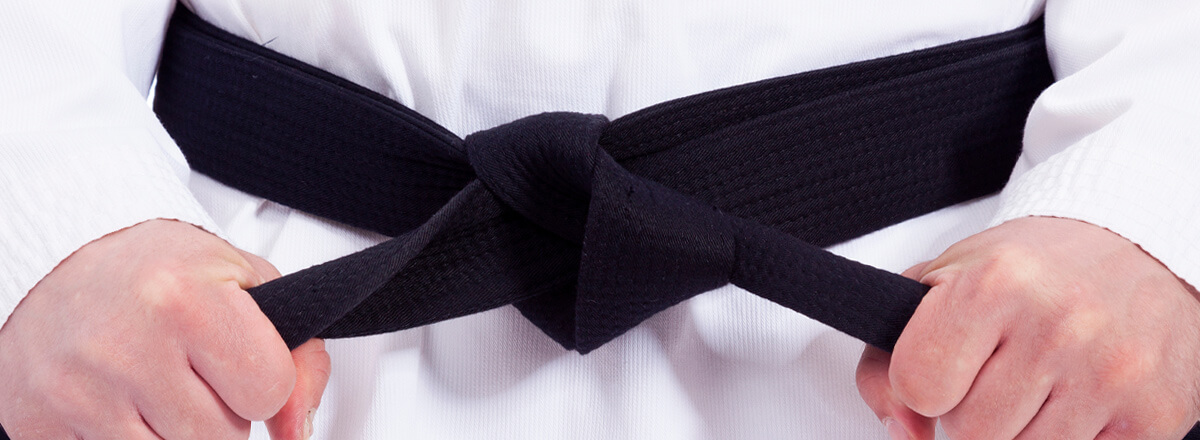
To all students of GKR Karate,
The catalyst for writing this letter was the recent grading of two of GKR’s senior most instructors:
- Gavin Samin – GKR Karate’s Assistant Chief Instructor
- Anthony Ryan – GKR Karate’s International Director of Coaching
In November 2023 I had the pleasure of grading both to 7th Dan (Shichi-dan) Black belt. Beyond this great achievement I also bestowed on each the title of Kyoshi.
As this title had never existed in GKR Karate previously, I’ve had many students and instructors enquire as to what this title means. Beyond that, in recent times I have been contemplating using some new terms (titles) when referring to a number of our senior-most instructors; hence this letter.
As I am writing to all students, including those who may have only just started their journey with GKR Karate, (welcome!) I feel I should start from the beginning, with myself.
Kancho (pronounced Karn-cho)
The way I would introduce myself in a dojo would be “Hi, I’m Robert”. Most instructors will introduce themselves simply by name. Ultimately because we see ourselves first and foremost as students of karate. We still train with the aim to grow and improve in our own journey.
Beyond being a student, I’m also a teacher (Sensei). So, while I rarely hear it, it’s not incorrect to suggest I am Sensei Robert, or even Robert Sensei. It might be worth noting the Japanese put titles after a person’s name while we in the West will place a title before.
As I founded GKR Karate and am the head of the style, the title you will regularly hear accompanying my name is Kancho. In simple terms, Kancho means ‘Head of style’. It’s also regularly translated as ‘Founder’, although a more accurate word for founder is Kaiso.
Sen-sei (pronounced Sen-say)
The term Sensei, or teacher, is a not unique to martial arts. In Japan, any teacher is generally referred to as sensei, whether it’s a school-teacher, karate teacher, tennis coach etc. It’s comprised of two Japanese characters (known as kanji) which suggest ‘Before’ and ‘Born’.
This doesn’t mean one has to have literally been born before. Many teachers are younger than their students. It merely suggests one is passing on knowledge because they have more experience, wisdom and/or knowledge in that particular field and are qualified to teach.
So, while your instructors may introduce themselves to you with their first name, it is a courtesy to refer to them with the title of Sensei. Many of our classes will have more than one instructor and while one may be the main instructor for the class, it’s a courtesy to refer to all instructors as Sensei.
Sen-pai (pronounced Sem-pie)
The first Japanese kanji, ‘Sen’ is the same for both Sen-pai and Sen-sei. However, we pronounce Sen-pai as Sem-pai. This occurs when we have the letter ‘N’ preceding the letter ‘P’.
Perhaps you enjoy Japanese food and have eaten Tempura? It’s actually Ten-pura. Or maybe you enjoy the karate kata, Empi? It’s actually En-pi.
This is due to the way our mouths form sounds. When we sound the letter ‘N’, our lips remain apart. Yet when we sound the letters ‘M’ and ‘P’ our lips come together. You’re likely making these sounds right now to check if that’s true.
As such, when an ‘N’ precedes a ‘P’ we must close our lips to form the ‘P’ sound. In doing so, the letter ‘N’ starts to sound like an ‘M’.
To keep things easier, when Sen-pai is written in English its often spelled as Sempai to avoid confusion. The same way most Japanese restaurants will use the spelling Tempura. I will continue to use it as Sempai from here on in to help remind you of its pronunciation (even though saying it as Senpai is certainly correct).
GKR Instructors will often ask a student in the class who has exemplary technique to assist. Perhaps they will simply stand out the front to demonstrate the techniques while the instructor moves around to correct students. Or perhaps they may be asked to supervise and assist a group of students in the class. If a student is assisting the instructor in your class, it is a courtesy to refer to these students as Sempai instead of simply using their name.
Shihan (pronounced She-harn)
This is a title many of you will be familiar with as GKR Karate has used this term for over 20years now.
Shi-han is comprised of two Kanji. The first, ‘Shi’ means a ‘Head-teacher or Master’. The second, ‘Han’ could be translated as ‘Model’ (like a role model or example). Its frequently translated as ‘Expert teacher’.
Shihan (like the term, Sensei) is also commonly used in Japanese culture outside of the martial arts. The title suggests you are a master teacher who can assist other teachers. It also suggestive of initiative and the ability to lead.
Japanese martial arts have no specific criteria for the qualification of a Shihan title. Some styles introduce it to top instructors at 4th Dan Black belt while others wait till 5th or 6th Dan. Some even require a certain age-criteria to be met before bestowing such a title. In GKR Karate, I have not created any specific criteria but the majority of those who hold the title are 6th dan black belts, and all are responsible for leading other instructors.
At present in GKR I have given the Shihan title to:
- Gavin Samin, GKR’s Assistant Chief Instructor
- Anthony Ryan, GKR’s International Director of Coaching
- Daniel Tregenza, Senior instructor of Adelaide Region 9
- Alex Pereda, Zone Instructor of NSW
- Bob McCracken, Senior Instructor of the United Kingdom
- Antonie De Bruin, Senior Instructor of New Zealand
- Peter Durrant, Zone Instructor of NSW
- Jan Lopez, International Senior Instructor for GKR’s Online Academy
 Introducing the entire Shogo system of Japanese Martial Arts into GKR Karate
Introducing the entire Shogo system of Japanese Martial Arts into GKR Karate
When karate solely existed in Okinawa it was vastly different to karate as we know it today. There were no Gi’s (uniforms), or belt grades or even organised curriculums.
It wasn’t until karate reached mainland Japan that the governing body of Japanese Martial Arts (the Dai Nippon Butokukai) insisted it introduce aspects of other Japanese martial arts (like Judo and Kendo).
This meant those Okinawa instructors who wanted to teach in mainland Japan had to introduce Gi’s and the Shogo system.
The Shogo (titles and ranks) System was a system to measure progress and development, and it was predicated on three main areas:
- Measuring a martial artist’s technical proficiency and experience
- Measuring a martial artist’s teaching proficiency and experience
- Measuring a martial artist’s character development, philosophy and conduct
1. The system for measuring a martial artist’s technical proficiency and experience involved introducing the Shogo of Kyu and Dan grades (the belt system)
2. The system for measuring a martial artist’s teaching proficiency and experience involved introducing the Shogo of Sempai, Sensei and Shihan. There are actually others, but I have decided not to implement these.
3. The system for measuring a martial artist’s character development, philosophy and conduct involved introducing the Shogo of Renshi (pronounced Ren-she), Kyoshi (pronounced Key-oshe) and Hanshi (pronounced Hun-she)
I only decided to introduce the third Shogo system around 7 years ago. Despite that, these terms have been seldom heard in our dojos. That however is about to change; another reason for writing this letter.
A general rule throughout the martial arts world was Renshi shogo could be (but did not have to be) awarded to someone who had achieved Roku-dan (6th dan). The Kyoshi shogo could be awarded to someone who had achieved Shichi-dan (7th dan) and Hanshi (the highest shogo) could be awarded to anyone 8th dan or above.
You will notice that Ren-shi, Kyo-shi and Han-shi all end with the same Kanji, ‘Shi’. This Kanji could be translated as ‘Gentleman’ (although it obviously does not have to be a male), or warrior (in terms of mental fortitude) or even scholar.
The Kanji for Ren-shi could be translated as: ‘Ren’ (Polished) ‘Shi’ (Gentleman, Warrior or scholar).
The Kanji for Kyo-shi could be translated as: ‘Kyo’ (Professor) ‘Shi’ (Gentleman, Warrior or scholar).
The Kanji for Han-shi could be translated as: ‘Han’ (Model or example) ‘Shi’ (Gentleman, Warrior or scholar).
You may be wondering if the terms Shi-han and Han-shi are simply the same two Kanji but placed in reverse order? This is not the case. While the Kanji, ‘Han’ is identical in both (meaning model or example), the Kanji for ‘Shi’ in Shihan is different to the other three shogo. It translates more accurately as teacher (as opposed to gentleman, warrior or scholar).
I feel it’s important to note that being a high-dan black belt does not guarantee someone has exemplary character. In actuality, there a many people on this earth who’ve never trained in karate and still have impeccable character. In martial arts, the shogo of Renshi, Kyoshi and Hanshi are discussing the character that one develops over decades of concerted training.
Up until last month, GKR had several people who were identified as Shihan. While they were referred to as Shihan, the 6th dans had also been awarded with the character based shogo. Let me use New Zealand’s Senior instructor, Antonie de Bruin as an example:
- Roku-dan (6th dan black belt): This shogo is an illustration of Antonie’s technical proficiency, knowledge, dedication and experience as a student. This is indicative of his personal journey in the dojo.
- Shihan: This shogo is an illustration of Antonie’s expert teaching ability and his great leadership as a teacher of teachers. This is indicative of how helps others with their journey in the dojo.
- Renshi: This is an illustration of Antonie’s character, philosophy and conduct as not only a student and instructor, but also a human being. This is indicative of his personal journey beyond the dojo and indicative of how he helps others with their journey beyond the dojo.
While Antonie was has been referred to as Shihan (his teaching shogo) many were unaware he had also been awarded a certificate for Renshi. Despite GKR housing a number of Renshi-Shihans, we simply used the term Shihan to keep things short.
As I stated earlier, I have been pondering changing the way our top leaders are referred to and as from now, I would prefer the following:
When in a formal setting, such as bowing into or out of class, if an instructor has more than one title that has been bestowed upon them, then both are mentioned. For example, “Kyoshi-Shihan” or “Renshi-Shihan”.
Outside of a formal setting, such as addressing them during class, students need not mention both (the same as we have been doing for many years). However, from now on I would prefer that students no longer use the Shihan shogo and instead use the Renshi or Kyoshi shogo.
Why these changes?
Knowing that these titles are more related to character and conduct I think it sets a strong reminder for every student that developing ourselves as human beings (karate-DO) is equally important (if not more) than just developing our physical body or self-defence skills (karate-JUTSU). * ‘Do’ translating as ‘Path’ or ‘The way of’ and Jutsu (not to be confused with Jitsu) translating as ‘Technique’ or ‘Method’.
To quote the father of modern karate, Gichen Funakoshi, “The ultimate aim of karate lies not in victory or defeat but in the perfection of the character of its participants”.
I am aware that most of you do not train with our senior most instructors, but you may find yourself attending a seminar they conduct and its good information to know.
And for those who do currently train with them, this may take a period of acclimation but no doubt it will become habit before long.
Moving forward
As GKR surpasses 40 years of age and heads strongly to our 50th Anniversary, no doubt many more of our most dedicated karate-ka will be looking at their Roku-dan grades (6th dan). This will also qualify them for a Renshi shogo, a title to illustrate their decades of character growth and to serve as a constant reminder to always endeavour to be a great role model for others, both in and out of the dojo.
Some of those who achieve 6th dan will also be leaders and teachers of teachers, and as such will also qualify for a Shihan shogo. This means as the years pass you will be hearing titles of Renshi or Shihan, or Kyoshi or even Hanshi more-and-more. This truly excites me as it only illustrates that what we have all created is so special that people are sticking around for many decades.
I will finish by saying that one does not need such distinguished titles to become an expert instructor or student of great character. Nor does one need a title to become a role model for others. These are things we should all aim for to not only make our own lives better but also the lives of everyone around us.
Yours in the spirit of GKR Karate
Robert Sullivan
Related Articles
Families Who Training Together
The Five Animal Styles That Influenced Karate



